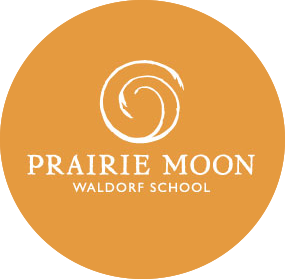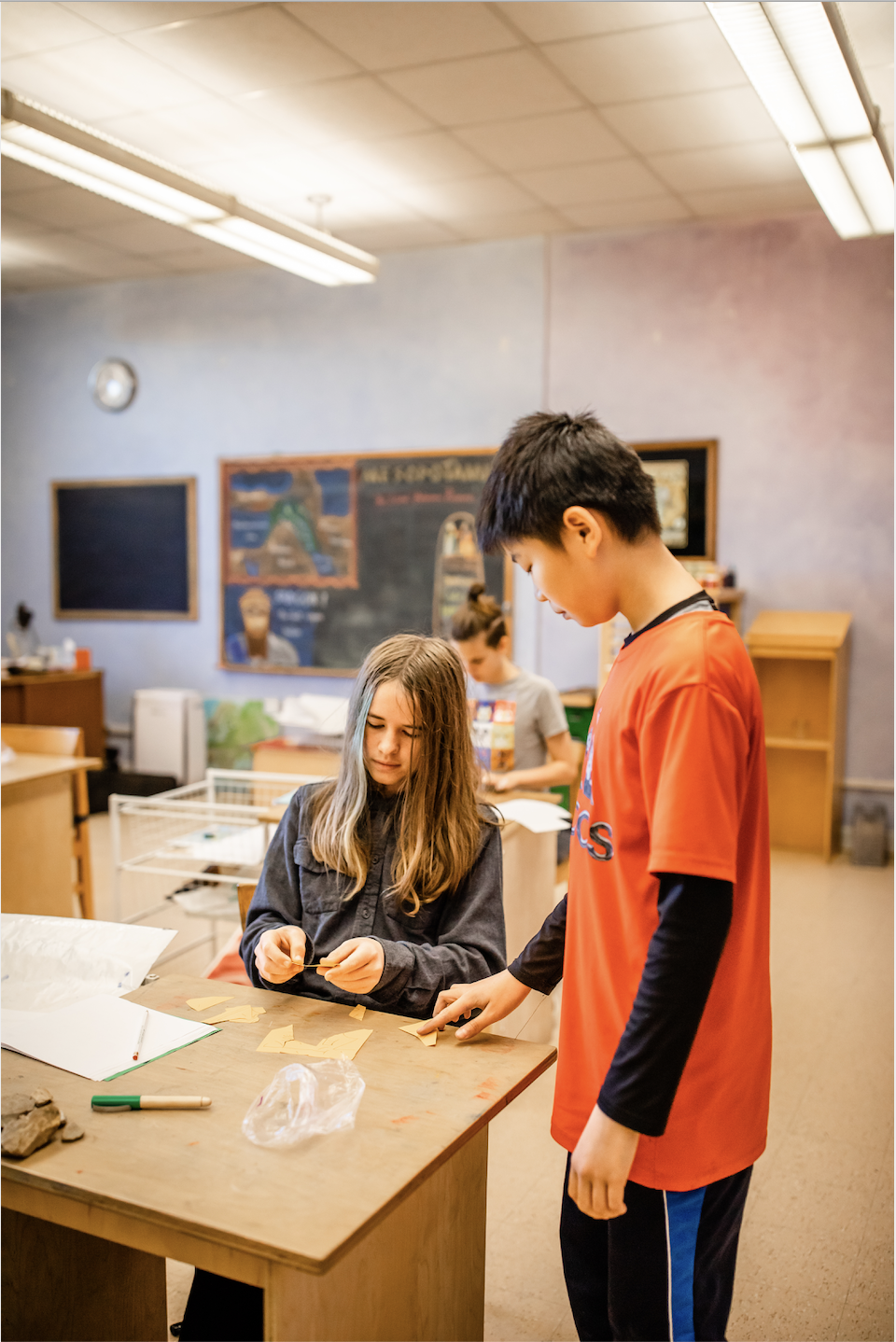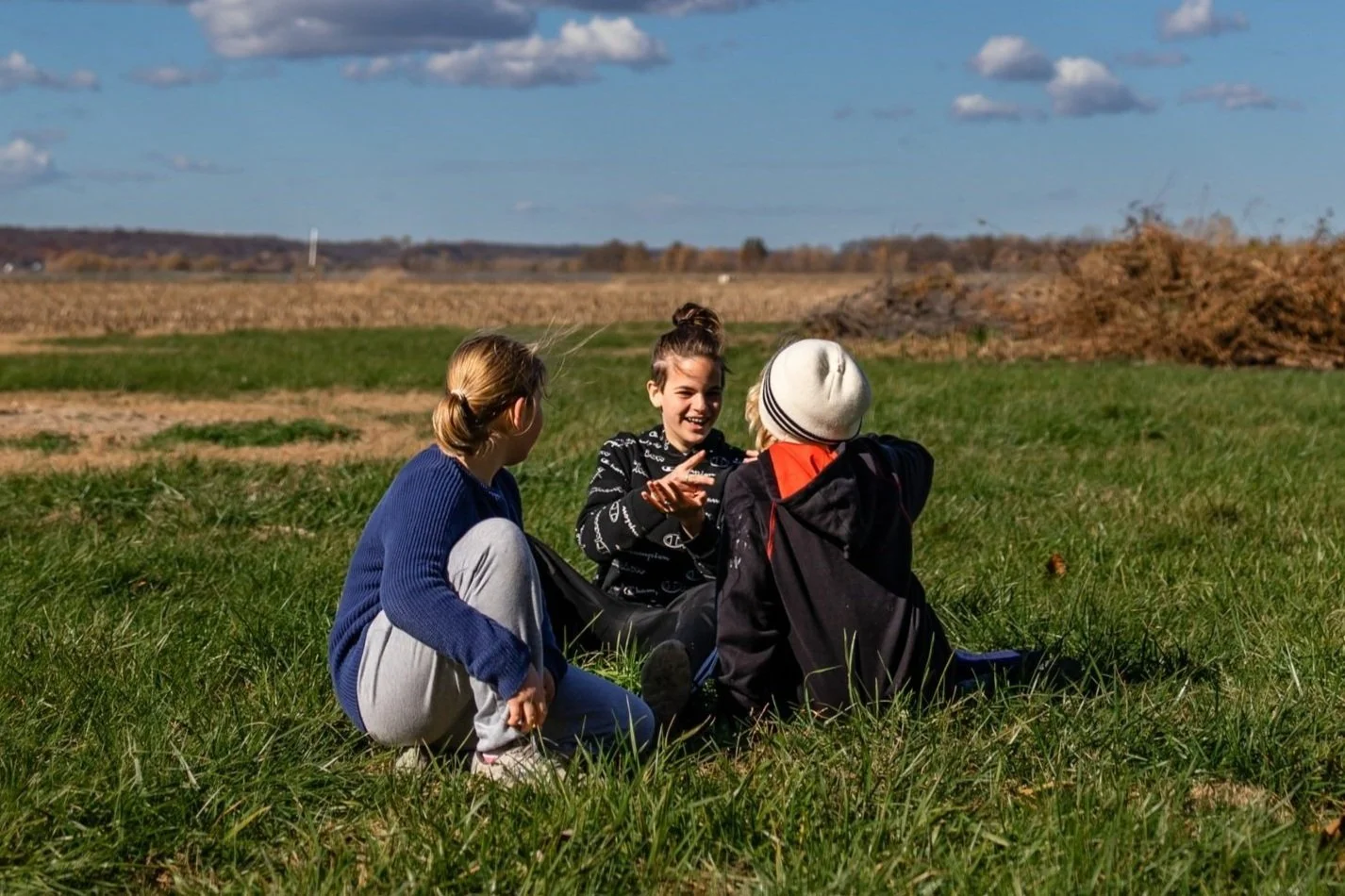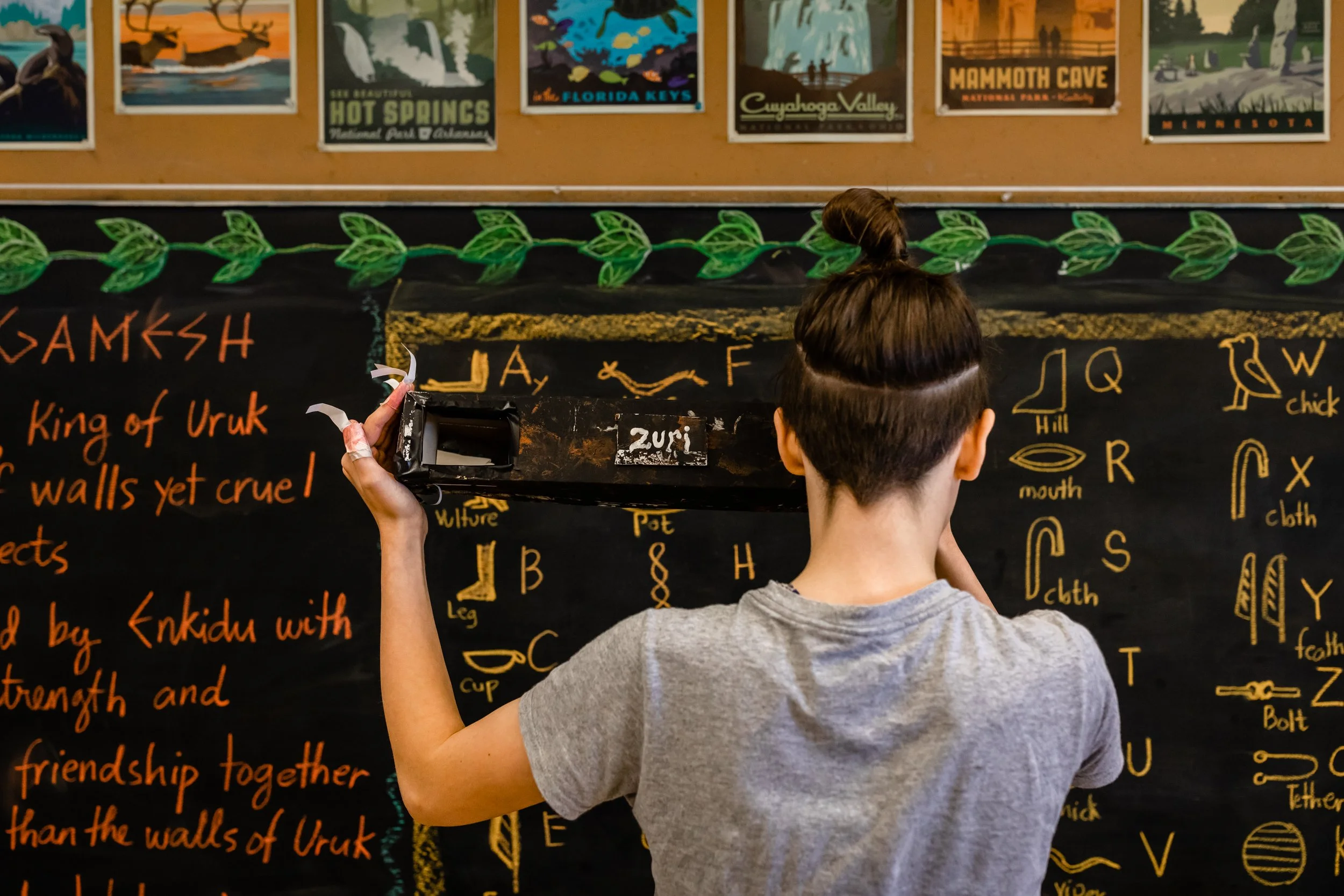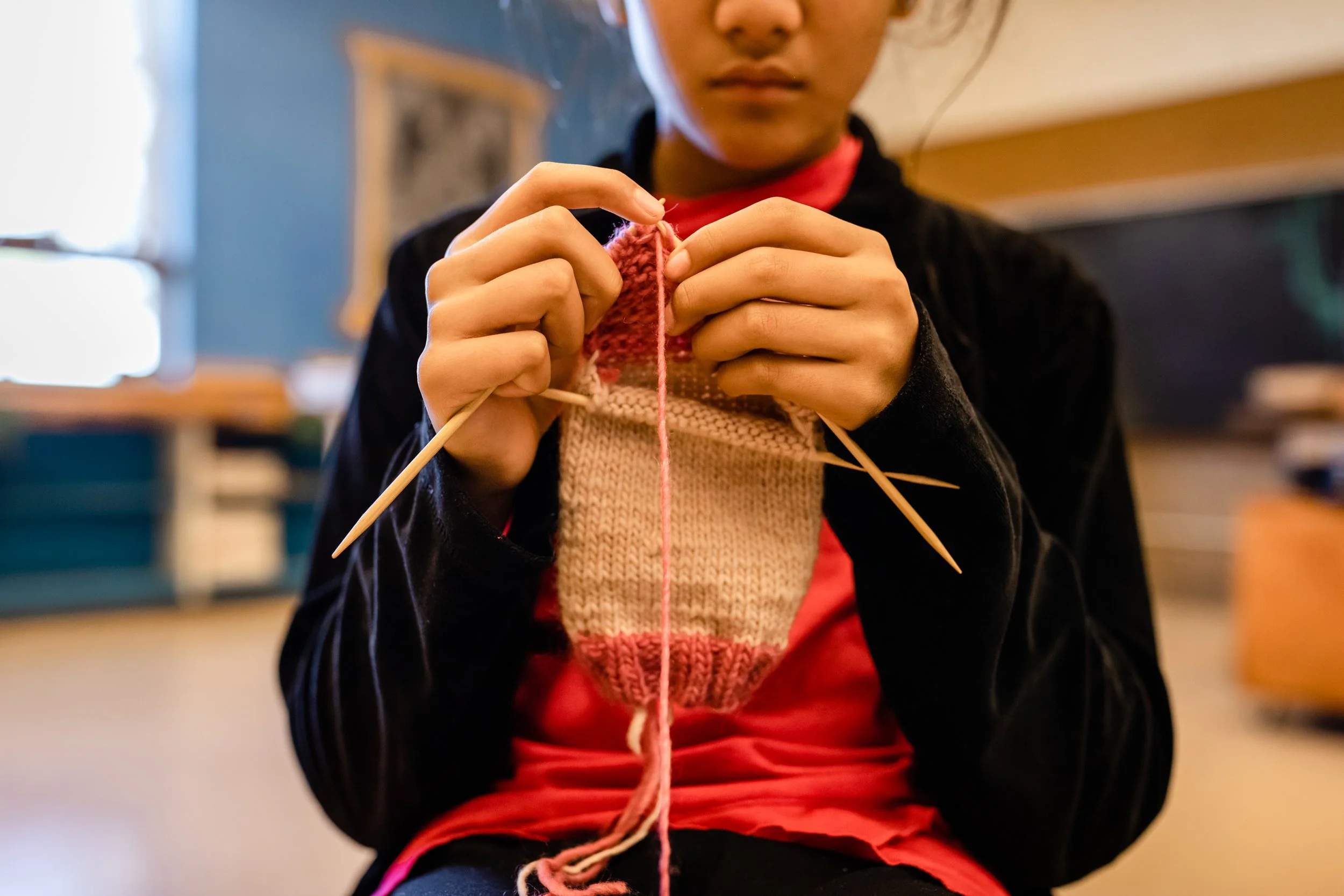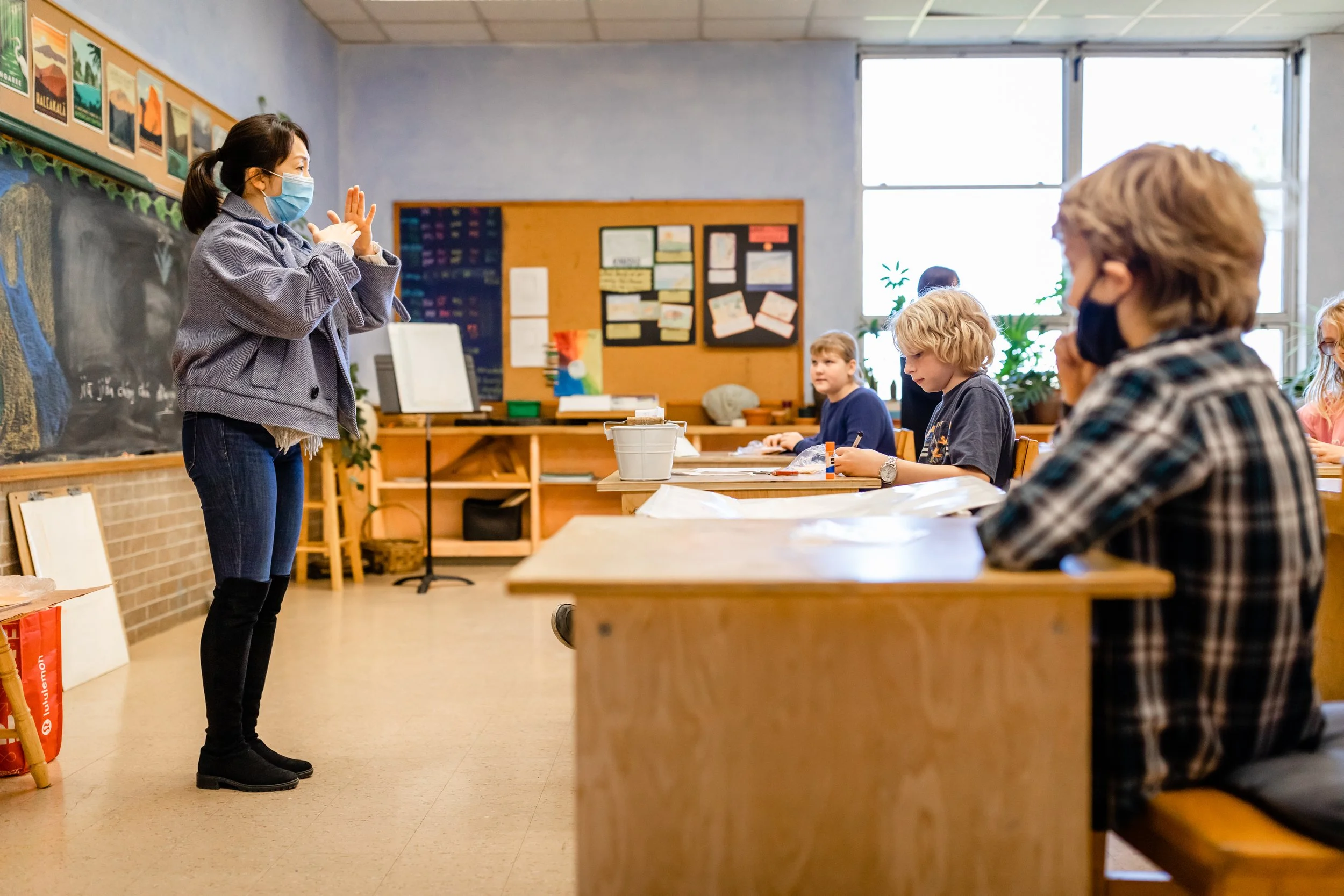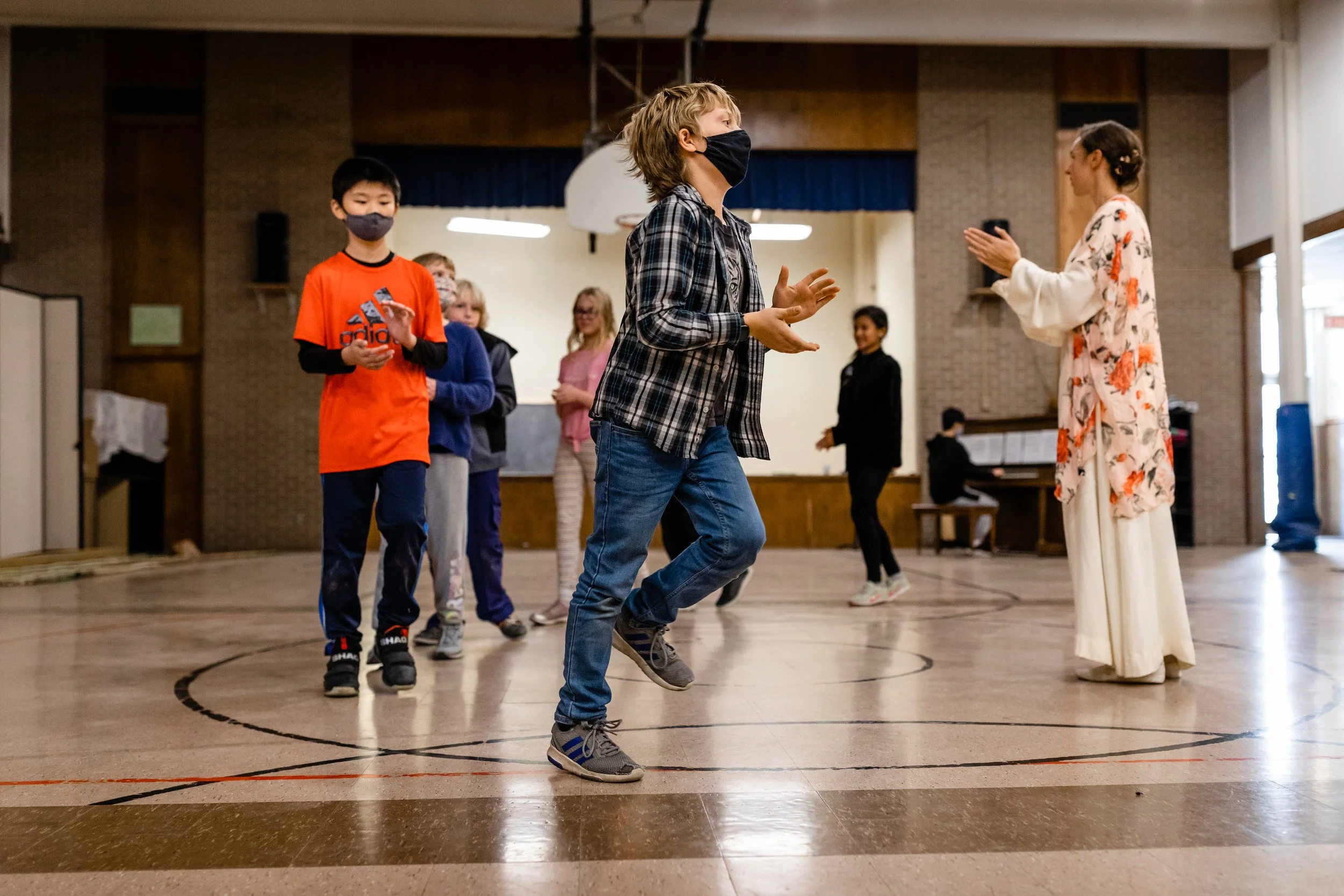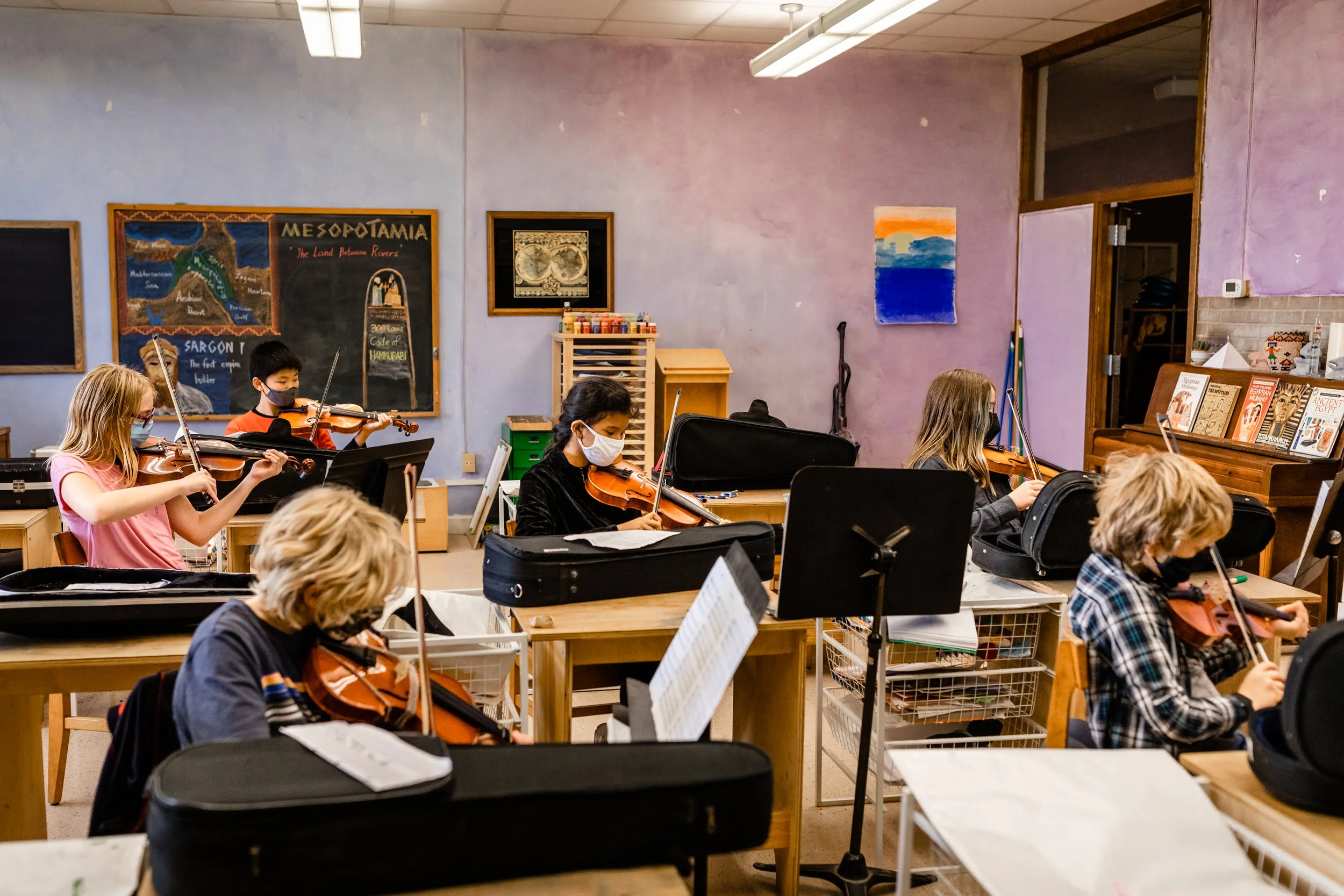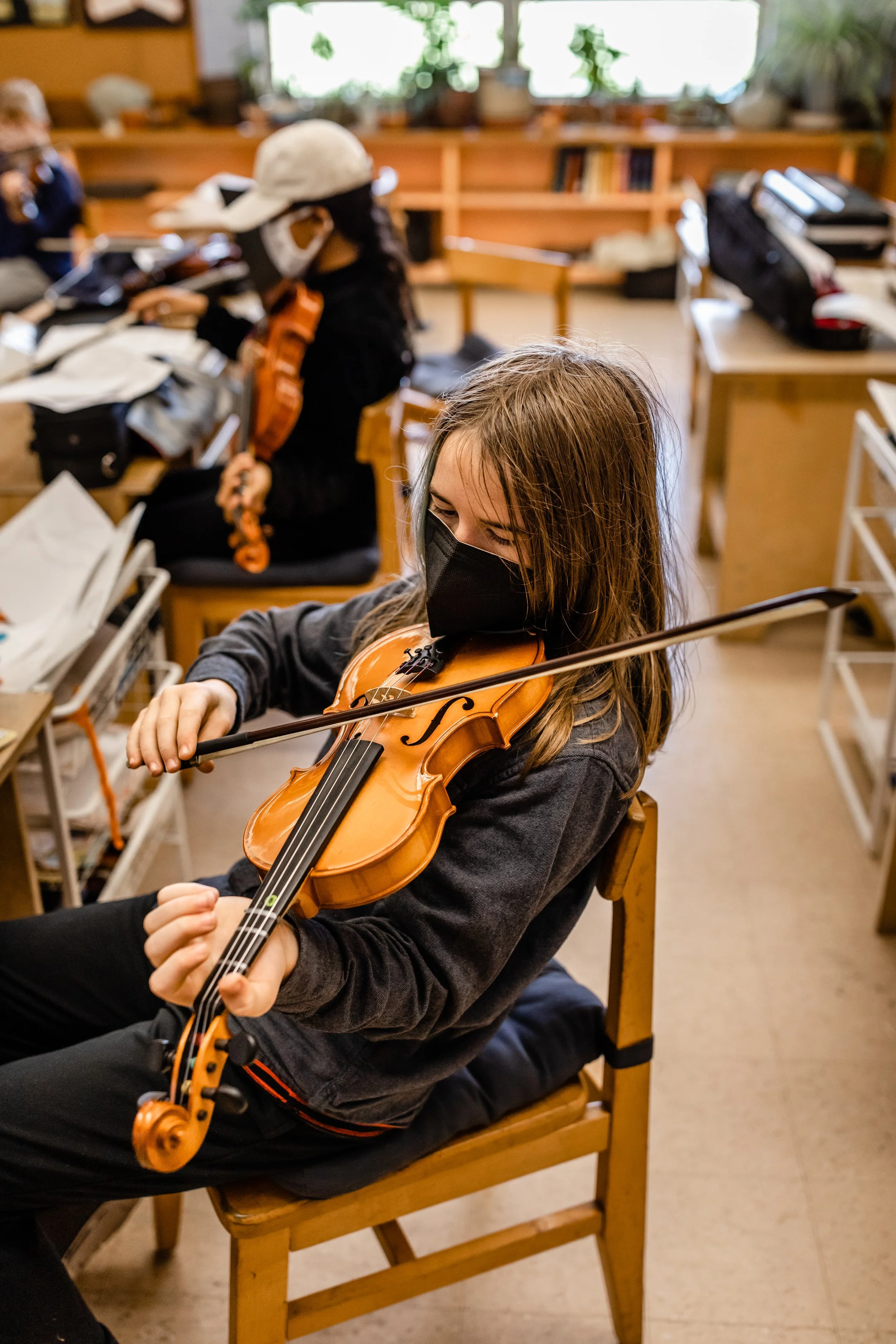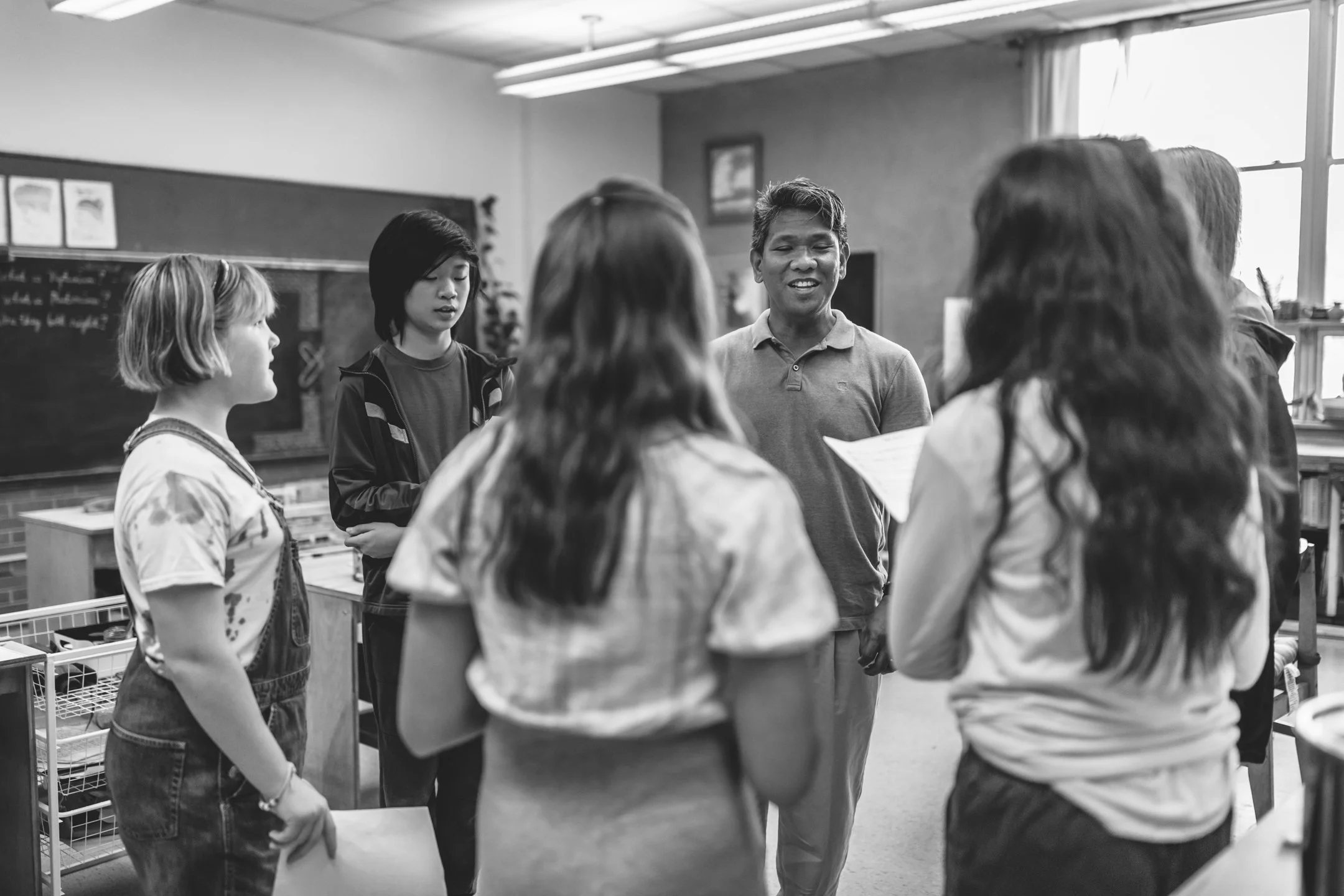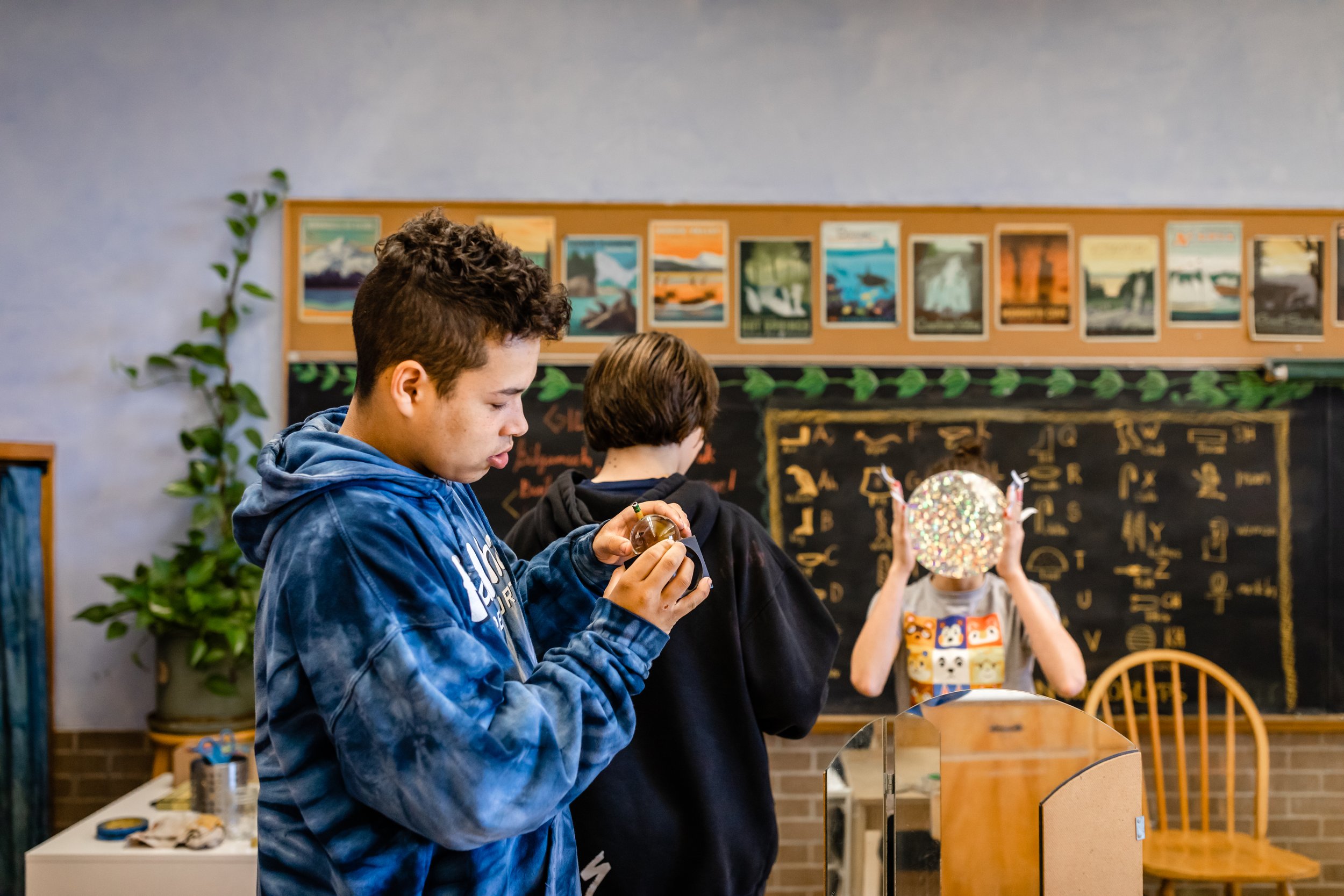
MIDDLE SCHOOL
Grades 6th-8th
Middle School at PMWS is a time of maturing and questioning and striving. Our program meets the student on the cusp of adolescence, as they begin to experience a new feeling of weight and gravity in their bodies. It is crucial for them to feel themselves standing firmly on the earth. Now is their time to think beyond themselves with a fearless need to question and explore.
Grade 6
Grade 6 is a year of maturing. They study a broad swath of history during which human civilization matured and stepped out of ancient ways.
The foundations of Grades 1-5 paved the way for big steps in sixth grade: form drawing and mathematical principles develop into the study of geometry and shape; the creation myths and legends lay groundwork for the study of the Roman Empire and the Middle Ages; and mathematical and observational skills enable scientific inquiry.
This maturing process takes the student out of childhood and into an increased awareness of what the world has in store for them. The study of math, for example, pivots from principle to the application of mathematical skills to taxes, compound interest, and other real-life uses.
Grade 7
Grade 7 is a year of questioning. Through their study of the Renaissance, the Reformation, and the Age of Exploration their view of the world moves beyond the ancient history and creation myths of their previous years and into a dynamic and chaotic modern age.
They begin a rebirth of their own view of the world in which ancient history culminates in modern politics, conflicts, and changes. Study of the Renaissance takes them to new levels of math and science, art and culture. Abstract mathematical thinking and engineering are prominent topics throughout the year, and through the joint study of geometry and art the students learn that to make paint or design objectively is not to sacrifice beauty.
Those same principles inform the study of the human and the body’s ability to sense and interact with the world around it. Processes like combustion are studied at length, and with the ability and willingness to question the world around them the seventh graders are prepared to enter their final year at Prairie Moon.
Grade 8
Grade 8 is a time of striving. While they live their own innate leadership role in the Prairie Moon community, they also look out to the world around them by studying history, evolution, and revolutions.
As the eight graders begin the transformative teenage years their idealism and energy is channeled into a questioning relationship with the modern world: through study of revolutions they analyze the roots of modern conflicts and progress; through advanced topics in physics and mathematics they explore the very laws of the universe; and through the responsibilities given to them in the school community they strive to make a positive impact in a dynamic world.
With a solid foundation of core academic knowledge, hands-on skills, artistic sensibilities, and a sense of wonder about the world, our eighth graders graduate Prairie Moon well prepared for the next steps in their education and for life.
Our Specialty Classes:
Handwork
Handwork brings a balance between intellectual and movement activities, allowing students to experience the struggle, joy, and care required in the creative process. Through the creation of projects they are also able to build confidence in themselves and the things they create as they see them evolve. As the children grow so do their handwork experiences. Starting with finger crochet, simple hand sewing, and basic knitting the children build their handwork skills and experiences before advancing through to cross-stitch, 4 needle knitting, crochet, and sewing on a treadle sewing machine.
Mandarin
All students in the grades program participate in Mandarin lessons twice a week. In the lower grades, all work centers around movement, singing, storytelling and games with some illustrative work in notebooks. The goal is to build vocabulary and an ear for the language as it is primarily used orally in simple situations. Cultural aspects of the language are underscored in all activities, with occasional celebrations of particular festivals, especially involving food. The upper grades see an increase in conversational work and an acquisition of the basic tenets of grammar. They begin to read texts and write in the language. In all grades, the material presented closely parallels the Main Lesson blocks taught by the class teacher. By the end of our program they are able to converse confidently with others and form not only a connection to Mandarin, but to the culture it comes from.
Strings
Starting in the 5th grade all students participate in strings class. The participation in strings class brings a new type of connection to music. Strings offer unique developmental opportunities as the student is required to engage in different ways at once. The player has to move the fingers of the left hand independently and in completely different motions from their right hand, not to mention at different speeds, all while reading and comprehending music pages. String instruments also allow the player to actually feel the music. The bow being drawn across the strings sends vibrations through the instrument producing the sounds, which the player can then feel within themselves. Learning to play an instrument teaches more than just how to play the instrument. It introduces problem-solving skills, brain development from using all parts of their brain, encourages self discipline and provides an emotional outlet for the students. In addition to all of that, strings provide the opportunity to be a part of an ensemble working and striving together to create something beautiful.
Woodworking
Starting in the 5th grade, students begin to learn about woodworking. Woodworking helps develop focus, creativity, perseverance, and skillfulness of eye and hand. Students learn how to properly use tools to shape their creations and to understand the quality of materials they are working with. As they become more experienced with woodworking they move on to creating more complicated projects. All students learn to create projects from scratch, and see them through to completion over any road blocks they might face.
Movement
Physical movement is an essential element of Waldorf education. Children need the ability to move around, not only to develop their physical body, but to also be able to see into how their body works and moves. Movement classes are designed to give each student the opportunity to understand how their bodies move, and learn to inhabit them with confidence that will carry with them into their adult lives. Classes are filled with activities that meet each student in their stage of development; these activities help to build a solid foundation in balance, dexterity, coordination, strength, and spatial body awareness to build student’s confidence in their bodies.
Music
Music is an integral part of our school. Music classes are designed to meet the student at the developmental stages the are in. Starting in the first grade all students participate in learning the pentatonic flute The inclusion of music in is a key part to student’s development. Through music, the students engage their heads, hands and hearts fostering an essential connection through the impact music has on the body, soul and spirit. Creating music requires every part of the body. The physical body operates the instrument, the mind carries the beat, and the heart creates the harmony and melody. Engaging every part of the body, having each part work in harmony, music is essential experience. In music class, they not only engage themselves in the music but also learn to create music with others. Everyone has a unique approach to music, and working together allows them each to take unique aspects of themselves to create a harmony with others. In Prairie Moon, music is everywhere. Students engage in music not only in music classes, but also with their teachers between and during lessons as they use music to introduce concepts and form connections with students.
Looking to Start the Enrollment Process?
Grades School Schedule:
MONDAY - THURSDAY: 8:30am - 3:20pm
FRIDAY: 8:30am - 1pm
ARRIVE BETWEEN 8:10-8:15am
TEACHERS GREET THEIR STUDENTS BEGINNING AT 8:20am
